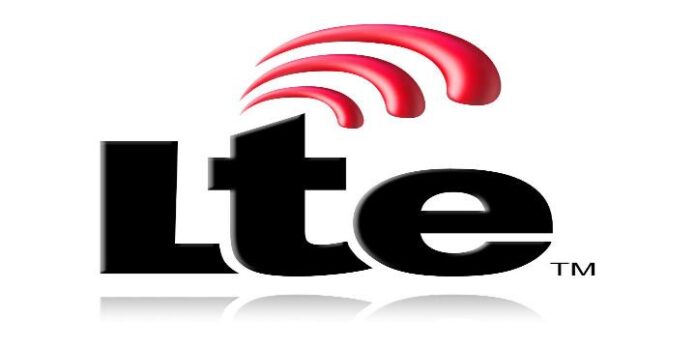Editor’s Note: Welcome to our weekly Reality Check column where C-level executives and advisory firms from across the mobile industry share unique insights and experiences.
The regulatory and market dynamics affecting mobile services in the Asia-Pacific region make voice over LTE and other advanced technology an appealing investment for operators in the region.
By way of example, consider South Korea and Japan, which are analogous in the way they operate. In general, these countries have the most advanced, modern mobile networks on the planet. The region is a proving ground for a lot of technology from companies like Ericsson, Nokia, Samsung, LG and, for local vendors including NEC and Fujitsu.
In the U.S., a nationwide, coverage-dense network from one provider has somewhere in the range of 60,000-90,000 base stations each. By comparison, just on the island of Japan, a single provider might have something like 150,000 to 200,000 base stations in its network.
The density of base stations in Japan and South Korea is amazing compared to the U.S. For them, the concept of small cells is not much of a new thing. Practically speaking, they’ve already been doing a version of it for many years.
In downtown cores, they’ve put compact base stations on lamp poles, sides of buildings, rooftops, etc. You see more base stations on traditional towers in the countryside. There is also a great deal of overlay in these networks – with, for example, 3G and LTE equipment sharing the same physical space. As such, there is no sense of coverage issues anymore.
In fact, in both countries there is so much over-coverage that around 2010, operators began investing more in marketing and advertising than infrastructure. Regulators stepped in and incentivized re-focusing on infrastructure, calling on operators to invest a certain amount each year on network performance to avoid losing subsidies.
With urban areas already covered so well, operators responded by building out their networks into rural areas and outlying (vacation) islands and investing in early adoption of voice over LTE.
VoLTE phones have been available in parts of Asia-Pacific for more than a year. Initially there were some interoperability issues when trying to make VoLTE calls from one operator to another, typically transcoding issues causing calls to be barely audible. Those were growing pains, though; now for the most part the system works better.
What’s the appeal of VoLTE for Asian operators? Same as the in U.S.: it’s a way to get away from having to maintain two parallel networks (3G and LTE) and provide better data speeds by reusing 3G spectrum for carrier aggregation using LTE-Advanced.
VoLTE offers three main benefits:
–Differentiation with HD voice and video.
–Higher-quality service (including faster bandwidth) with spectrum optimization.
–Reduced operating expense.
Maintaining two networks is cumbersome. It means having to ensure coverage for two things at the same time in the same locations and is a big operating expense burden. VoLTE is a means of doing away with 3G, freeing up spectrum for other things and optimizing service/bandwidth performance. And, VoLTE allows operators to offer high-definition voice and carrier-grade video.
In Japan, LTE-A is starting to become a focus for operators, too. Basically, this is a method of carrier aggregation using frequency bonding to create bigger pipes/higher speeds within the same spectrum. Leveraging commonly available fractal-based antennas, it’s like combining multiple phones rather than multiple networks to carry more traffic. The LTE-A specification also natively addresses the need for optimized TCP and shaping for “bursty” traffic.
In South Korea, the introduction of LTE-A is creating a change in the market in that there used to be niches for vendors to sell TCP traffic optimization products to enable offerings on top of LTE. With LTE-A, these have less applicability.
In some regions of Asia, TD-LTE is also being rolled out in parallel or in advance of LTE-A. Basically, this is a way to split the spectrum into time slices rather than frequency slices; it’s aggregation in another form and it leverages spectrum they had initially allocated for older technologies. With TD-LTE comes the need for tighter time requirements for delivery to base stations. In the world of TD-LTE tight sync delivery is a required asset.
In moving away from 3G and toward a mix of LTE and LTE-A, operators in Asia Pacific are necessarily focusing on tighter coordination between base stations in high-density networks, and the monitoring systems required to assure the performance of that coordination.
While these operators see GPS as a prevalent sync solution, they don’t want to use it as the main synchronization source. Instead, they prefer to have it be a source of surveillance to make sure delivery is being done right and to raise red flags if there’s a drift in the quality of synchronization with the base station. PTP (1588v2) is the preferred clock distribution method, as unlike Sync-E, it can also transmit time of day, or phase (required for TD-LTE), in addition to frequency.
Operators in Asia Pacific want to make sure their backhaul networks are ready to carry VoLTE and LTE-A. A virtual network interface device and performance assurance solution is attractive because, with so many base stations, it’s impractical to install dedicated equipment at each location. Such solution is also capable of conducting tests between base stations, where handoffs are increasingly being coordinated over the LTE X2 inter-cell site communication standard, which is gaining adoption in these regions.
Obviously, the dynamics in APAC are quite different from Europe or North America. But looking at adoption of next-generation networking technologies in the region is an interesting study in how these types of deployments could affect markets elsewhere in the future.
Patrick Ostiguy founded Accedian Networks in 2004 and serves as president and CEO and sits on the board of directors. Prior to founding Accedian, Otisguy was co-founder of Avantas Networks and launched the industry’s first portable Ethernet and SONET field-services test-set. Otisguy is the recipient of the Ernst & Young’s Entrepreneur of the Year award in Quebec for recognition of his technology solutions and his exceptional leadership in driving growth, development and innovation in the industry. Otisguy holds a bachelor’s degree in electrical engineering from University of Sherbrooke.


